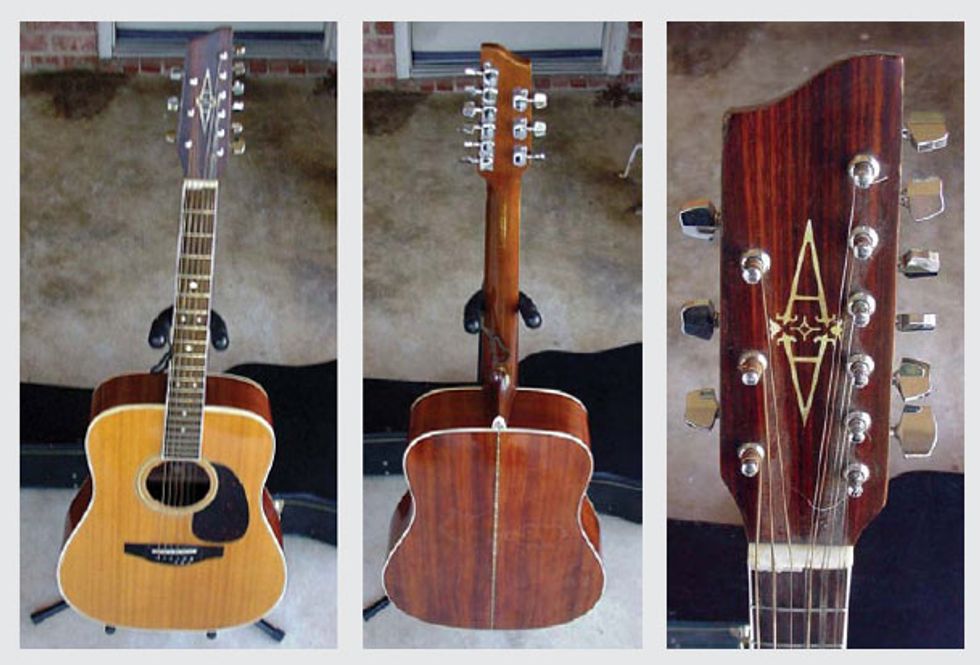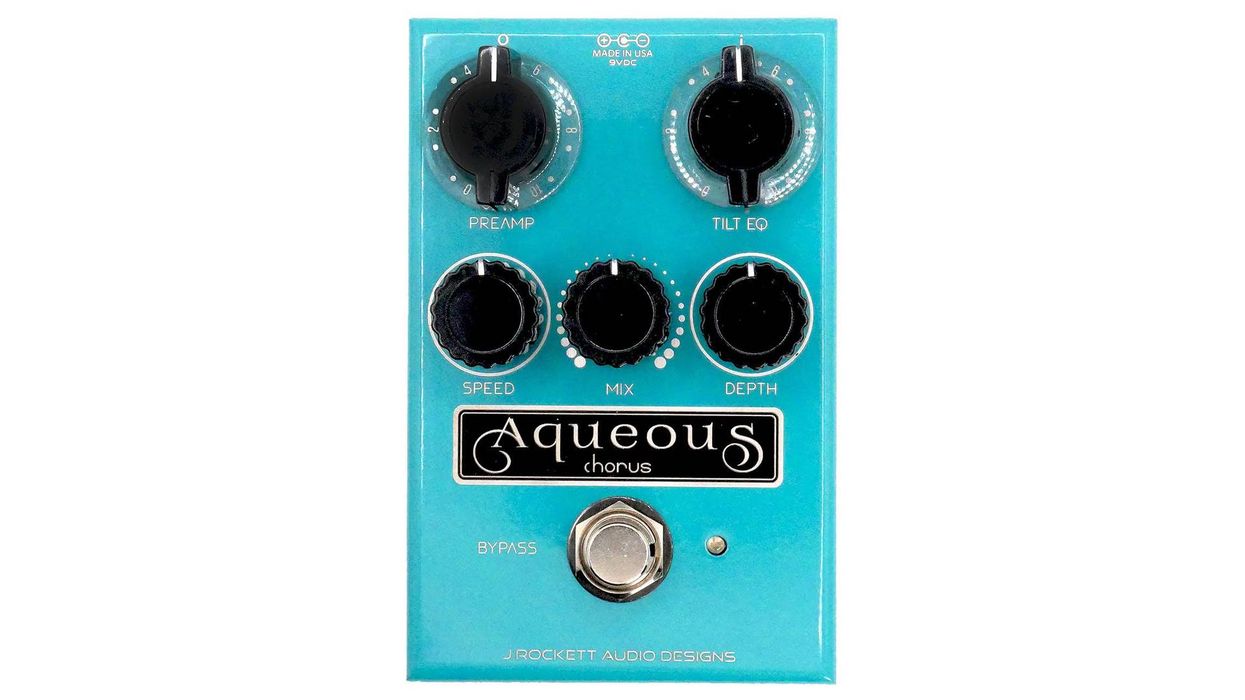Hey Zach, Here’s an oddball for you—an Alvarez 9-string acoustic. This axe came into one of the pawnshops I frequent, and as soon as I saw it I had to pick it up! At first, I thought it was a regular 12-string missing three of the strings, but after looking at the headstock, it is pretty evident that this came from the factory as a 9-string. In fact, this guitar sounds great for playing along to Tom Petty’s “Free Falling.” The label inside the guitar indicates it is a Model 5058, serial number 66563. Can you tell me something about it and give me a value? Thanks! —Rick in Fort Worth, Texas
Hey Rick, Innovation within the guitar industry often separates companies that succeed from those that disappear after a few years. Developing a unique guitar is quite a feat in an industry where so many designs are standard today. A guitar has to appeal to a large group of players in order to be considered successful. With the popularity of 7- and 8-string guitars, a 9-string seems like a natural progression for most guitar builders, but in this case a 9-string is hardly what it seems. This guitar looks like a 12-string because it is derived from one, but has a unique design and sound all its own.
Probably the most prominent Japanese manufacturer of acoustics available in the US, Alvarez has been around since the mid 1960s. (Yamaha is also quite popular, but they haven’t had the wide offering of instruments that Alvarez has.) The Alvarez-Yairi brand is Alvarez’s handcrafted line of acoustics, and these instruments are built by craftsmen under the direction of luthier/ designer Kazuo Yairi. While most regular Alvarez acoustic guitars are built in China today, the Yairi line is still handcrafted in Japan.
Alvarez uses a numbering system to identify its guitars (although some also have a model name), and from the 1970s through the 1990s, this was a four-digit number—which falls in line with your guitar model of 5058. Unfortunately, I haven’t been unable to find any dating serialization on Alvarez guitars regarding their date of production, but most examples of the 5058 I found online are from the early 1980s, with serial numbers ranging between 55,000 and 70,000.

Specifications for this guitar include a solid spruce top, laminated rosewood back and sides, multi-ply body binding, a 20-fret bound rosewood fretboard with diamond/snowflake inlays, a uniquely shaped rosewood headstock overlay with the Alvarez logo, chrome tuners arranged in a 3+6 configuration, a rosewood bridge, a faux-tortoiseshell pickguard, and what looks like a factory-installed piezo pickup with an endpin jack.
The guitar appears to be in very good condition, and based on this and what other Model 5058s are selling for, it is currently valued between $400 and $500. This is a unique instrument with limited applications based on the string layout (although Alvarez product literature indicates it can be played as a 6-string as well), and they were only produced for a few years. Some users have noted that the unbalanced string layout causes the neck to twist because of the added tension on the treble side. Astute readers may also notice that the same layout of a 9-string guitar can be achieved by removing the three bottom octave strings of a more common 12-string. Alvarez also offered a Yairi variation called the DY58 that was handbuilt in Japan.
This guitar is often referred to as the Harry Chapin model because he used to remove the bottom three octave strings on a 12-string and play with only the top three as pairs. In his song “Taxi,” you can definitely hear the 12-string sound on the upper parts, but this is noticeably absent on the lower parts. Some speculate that this could have been the Chapin signature model, but Alvarez catalogs do not confirm this.
In the past decade that I have been covering the guitar industry, I do not believe I have seen another production-model 9-string guitar. Give Alvarez credit for developing an innovative guitar, but if they were a small guitar company trying to survive solely on this one design, we might find them in a museum next to the dodo bird, Oldsmobile, and Billy Beer. Although for all those trying to achieve that Henry Chapin and Tom Petty sound, you’ll find this guitar to be quite a treasure!
 Zachary R. Fjestad
is author of Blue Book of
Acoustic Guitars, Blue Book
of Electric Guitars, and Blue
Book of Guitar Amplifiers.
For more information, visit
bluebookinc.com or email
Zach at guitars@bluebookinc.com.
Zachary R. Fjestad
is author of Blue Book of
Acoustic Guitars, Blue Book
of Electric Guitars, and Blue
Book of Guitar Amplifiers.
For more information, visit
bluebookinc.com or email
Zach at guitars@bluebookinc.com.












![Rig Rundown: Russian Circles’ Mike Sullivan [2025]](https://www.premierguitar.com/media-library/youtube.jpg?id=62303631&width=1245&height=700&quality=70&coordinates=0%2C0%2C0%2C0)



